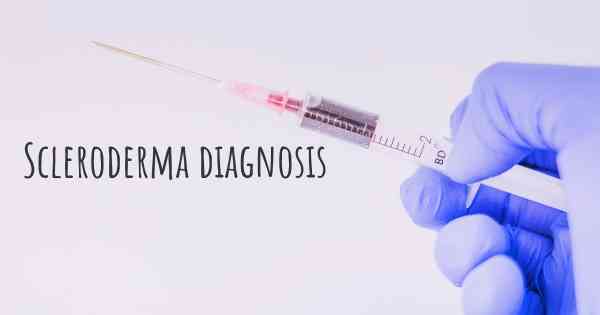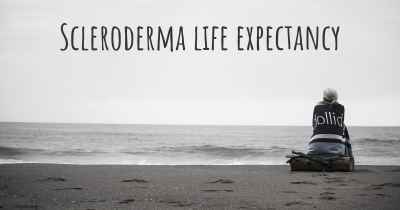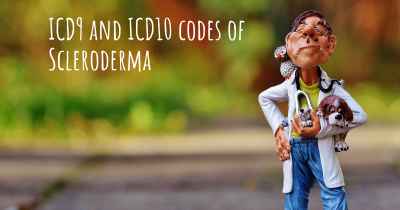How is Scleroderma diagnosed?
See how Scleroderma is diagnosed. Which specialists are essential to meet, what tests are needed and other useful information for the diagnosis of Scleroderma

Scleroderma is a chronic autoimmune disease that affects the connective tissues in the body. It is characterized by the abnormal growth of collagen, which leads to thickening and hardening of the skin and other organs. Diagnosing scleroderma can be challenging as its symptoms can vary widely and mimic other conditions. However, there are several key methods that healthcare professionals use to diagnose this condition.
Medical History and Physical Examination
The first step in diagnosing scleroderma is a thorough medical history and physical examination. The doctor will ask you about your symptoms, their duration, and any factors that worsen or alleviate them. They will also inquire about your family history of autoimmune diseases. During the physical examination, the doctor will carefully examine your skin, joints, and organs for any signs of scleroderma.
Antibody Testing
Antibody testing plays a crucial role in diagnosing scleroderma. The presence of specific antibodies in the blood can indicate the presence of the disease. The two main antibodies associated with scleroderma are anti-centromere antibodies (ACA) and anti-topoisomerase I antibodies (also known as anti-Scl-70 antibodies). These antibodies are found in the majority of people with scleroderma, but not everyone. Therefore, their absence does not rule out the possibility of having the disease.
Skin Biopsy
A skin biopsy may be performed to confirm the diagnosis of scleroderma. During this procedure, a small sample of skin is taken from an affected area and examined under a microscope. The biopsy helps identify the characteristic changes in the skin, such as increased collagen production and inflammation, which are indicative of scleroderma.
Imaging Tests
Imaging tests, such as X-rays, CT scans, and MRI scans, may be ordered to assess the extent of organ involvement in scleroderma. These tests can provide detailed images of the affected organs, such as the lungs, heart, and gastrointestinal tract. They help identify any abnormalities or damage caused by the disease.
Pulmonary Function Tests
Since scleroderma can affect the lungs, pulmonary function tests are often conducted. These tests measure lung capacity, airflow, and gas exchange to assess respiratory function. They can help detect any abnormalities in lung function and determine the severity of lung involvement.
Echocardiogram
An echocardiogram is a non-invasive test that uses sound waves to create images of the heart. It is commonly performed in scleroderma patients to evaluate heart function and detect any abnormalities, such as thickening of the heart walls or reduced pumping efficiency.
Other Tests
In addition to the above methods, other tests may be conducted based on the individual's symptoms and suspected organ involvement. These may include blood tests to assess organ function, joint imaging to evaluate joint damage, or gastrointestinal tests to examine the digestive system.
Consultation with Specialists
Diagnosing and managing scleroderma often requires a multidisciplinary approach involving various specialists. Rheumatologists, dermatologists, pulmonologists, cardiologists, and other healthcare professionals may collaborate to evaluate the patient's symptoms, test results, and medical history to reach a definitive diagnosis.
In conclusion, diagnosing scleroderma involves a combination of medical history, physical examination, antibody testing, skin biopsy, imaging tests, pulmonary function tests, echocardiogram, and consultation with specialists. It is important to consult with a healthcare professional if you experience symptoms suggestive of scleroderma, as early diagnosis and treatment can help manage the condition and improve quality of life.
Posted Mar 21, 2017 by Peggy L 550
Posted Apr 1, 2017 by Fashah 1150
Posted Apr 1, 2017 by Milda 1000
Posted Apr 3, 2017 by Choclit 1150
Posted Mar 30, 2018 by Amy 2600
Posted Nov 21, 2018 by Juanita 1900
Posted Feb 27, 2017 by cecilia miranda 1000
Posted Mar 21, 2017 by Amparo 1000
Posted Mar 23, 2017 by ana h 1400
Posted Apr 28, 2017 by Alma Olivia 1000
Posted May 11, 2017 by Tatiana 1135
Posted May 15, 2017 by Lucero 1050
Search for a rheumatologist to be ehor accompanied.
Posted Sep 30, 2017 by Carol 1000








